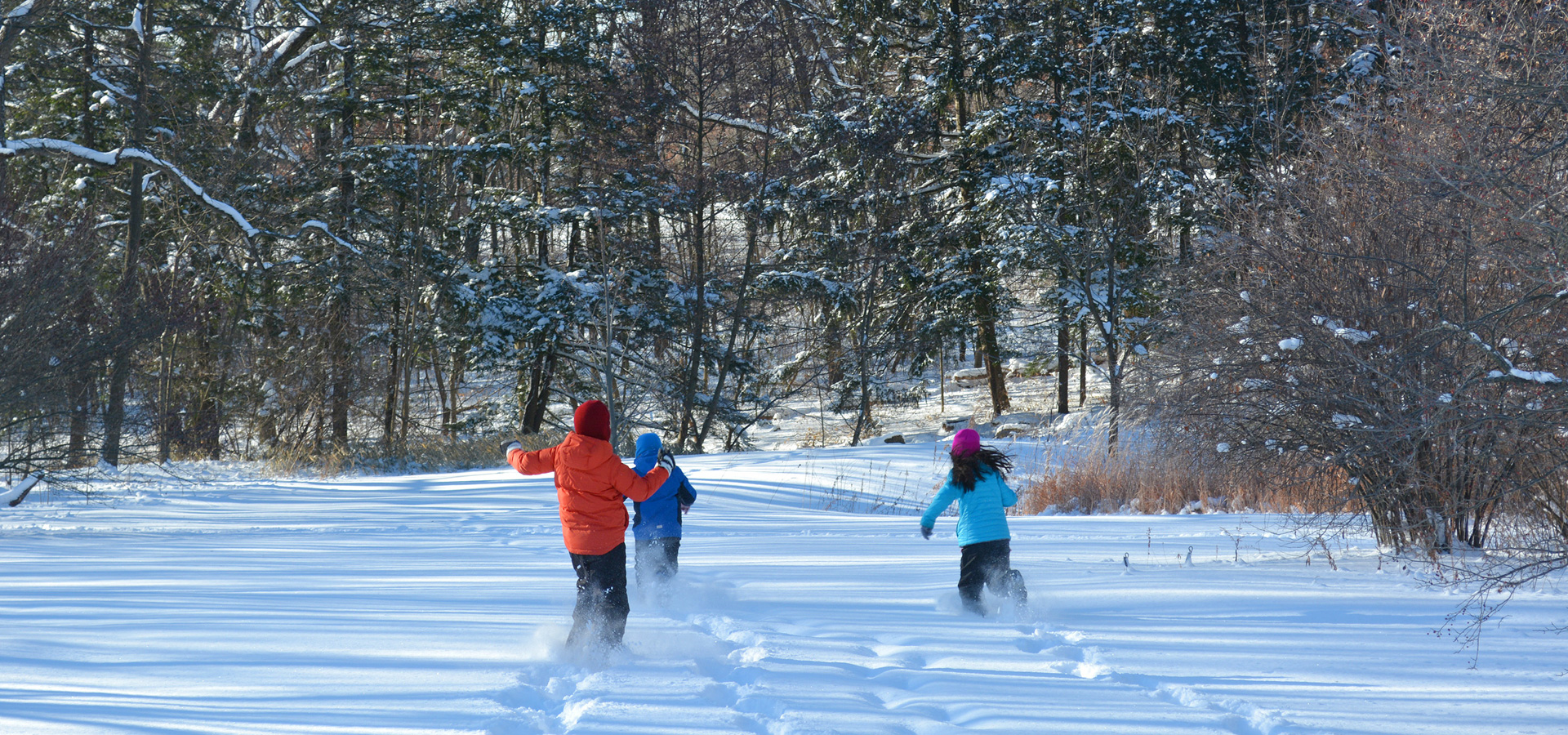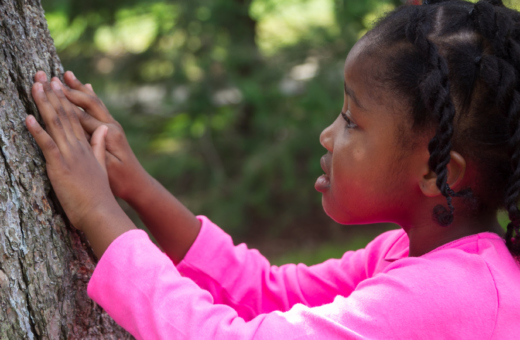Children and Nature
In the cold gray days of winter, The Morton Arboretum is a natural playground for kids. Here are some suggestions for outdoor winter fun from Laura Kamedulski, coordinator of youth and family programs.
Children’s Garden: This four-acre enclosed play space is designed as a safe place for children to freely explore nature play on their own year-round. There are age-appropriate areas aimed at children up to age 12. “If you’re only used to coming to the Children’s Garden in spring and summer, think of it as a great place to go in winter, too,” Kamedulski said. The garden is sometimes closed for safety reasons due to snow or ice. “But there’s still a whole Arboretum to explore,” she said.
Trails: The Arboretum has 16 miles of walking trails, some paved and some with a surface of wood chips. All the trails are interconnected to form loops of various lengths, and they can all be reached from nearby parking lots along the nine miles of roads. “Start with one of the shorter trails that can easily be reached from the Visitor Center, such as the half-mile, paved Meadow Lake trail,” Kamedulski said. “With older kids who are up for more of a challenge, take a short drive to pick up one of the woodsier trails.” For example, from the Big Rock Visitor Station (Parking Lot 13) you can take the Woodland Trail and the Heritage Trail, with good signage that helps explain what children are seeing. If you have small children in a stroller, look for paved, accessible trails.
Get to know a trail: “Come often to the same trail so children get to know it and feel at home in the outdoors,” she suggested. “Help them learn to navigate by landmarks, such as distinctive trees or Big Rock.”
Notice trees: A trail walk is about more than exercise; it’s an opportunity for children to notice the living things around them. For example, along the Conifer Walk, which is green in winter and easy to reach from the Visitor Center, children can notice the different shapes of various species of evergreen trees. “Ask children which trees are similar, and which ones are different, in various ways,” she said. “For example, pine trees have long, soft needles, and spruces have short, stiff ones.” Children are free to touch the trees and to collect cones, leaves, and branches that have fallen on the trail, although they shouldn’t climb the trees, Kamedulski said.
Spot wildlife: Even in winter, children may see and hear birds such as cardinals among the trees. “As you walk along, talk about how the trees might give shelter to birds and other animals,” she said. “Look for holes in trees, which are often someone’s home. Start a conversation about how trees might shelter animals against wind and snow.” If snow has fallen, look for animal tracks.
Look up close: “It’s always a good idea to take a small magnifying glass on a hike,” Kamedulski said. “Children love to examine things close up.” For example, moss, green even in winter on fallen logs, is fascinating under a magnifying lens. Winter is also an excellent time to compare the bark of different tree species. “Try bringing some paper and peeled crayons to take rubbings,” she said. “It can really reveal the texture of the bark.”
Make the most of snow: Snowshoeing and cross-country skiing are permitted at the Arboretum when there are four or more inches of snow. Equipment is available to rent or you can bring your own. Sleds are prohibited. Learn more about what to bring and what to leave at home.
Enjoy the space: “The Arboretum is a huge place, with more than 1,700 acres,” Kamedulski said. “It’s not just what you can see from the Visitor Center. Within a short drive, your family can find trails with all sorts of adventures.”



